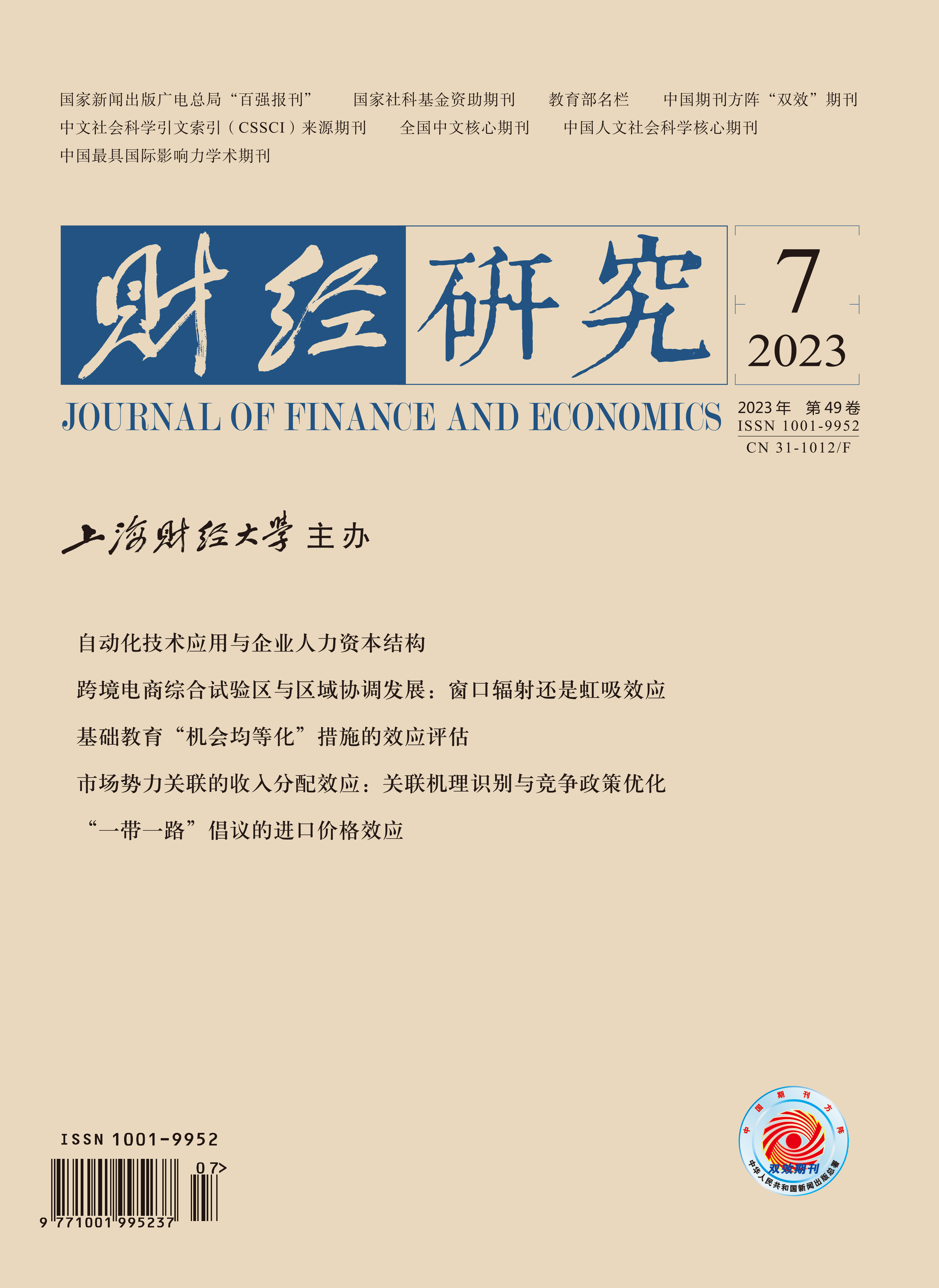企业数字化转型成为国家大数据战略实施的微观基础。中国家族企业必须适应数字技术变迁,而其重视情感财富的人格化特征与数字技术的去人格化本质存在紧张关系。文章基于社会情感财富与技术变迁互动的历史比较视角,运用2020年全国24 832家企业调研数据进行了实证分析。研究发现,从基本关系机理的维度,由于家族的社会情感顾虑,家族企业的数字化转型程度比非家族企业要低,且家族控股比例越高,这种情况越严重,而制定跨代传承计划有利于数字化转型。从适应机制的维度,健全正式治理制度和引进国有资本能够通过约束家族情感目标和引进异质性资源来弥合“数字鸿沟”,而疫情冲击进一步激发出家族企业韧性和情感的人格化优势,倒逼其实现数字化转型。文章进一步分析了国家股权和正式治理的影响机理,以及家族企业主和二代积极接触、学习数字技术的重要性。文章呈现出中国家族企业积极适应新兴数字技术并与之相互依存和共生演化的真实图景。
当家族企业面临数字化变革——基于社会情感财富和技术变迁互动视角的解释
摘要
参考文献
1 陈德球,胡晴. 数字经济时代下的公司治理研究:范式创新与实践前沿[J]. 管理世界,2022,(6):213−239. DOI:10.3969/j.issn.1002-5502.2022.06.034
4 李新春,贺小刚,邹立凯. 家族企业研究:理论进展与未来展望[J]. 管理世界,2020,(11):207−228. DOI:10.3969/j.issn.1002-5502.2020.11.015
6 刘淑春,闫津臣,张思雪,等. 企业管理数字化变革能提升投入产出效率吗?[J]. 管理世界,2021,(5):170−190. DOI:10.3969/j.issn.1002-5502.2021.05.014
7 刘政,姚雨秀,张国胜,等. 企业数字化、专用知识与组织授权[J]. 中国工业经济,2020,(9):156−174. DOI:10.3969/j.issn.1006-480X.2020.09.009
16 Ano B, Bent R. Human determinants influencing the digital transformation strategy of multigenerational family businesses: A multiple-case study of five french growth-oriented family firms[J]. Journal of Family Business Management,2022,12(4): 876−891. DOI:10.1108/JFBM-12-2020-0117
17 Arzubiaga U, Diaz-Moriana V, Bauweraerts J, et al. Big data in family firms: A socioemotional wealth perspective[J]. European Management Journal,2021,39(3): 344−352. DOI:10.1016/j.emj.2020.10.006
18 Barker H, Ishizu M. Inheritance and continuity in small family businesses during the early industrial revolution[J]. Business History,2012,54(2): 227−244. DOI:10.1080/00076791.2011.631117
19 Barnes L B, Hershon S A. Transferring power in the family business[J]. Family Business Review,1994,7(4): 377−392. DOI:10.1111/j.1741-6248.1994.00377.x
20 Berrone P, Cruz C, Gomez-Mejia L R. Socioemotional wealth in family firms: Theoretical dimensions, assessment approaches, and agenda for future research[J]. Family Business Review,2012,25(3): 258−279. DOI:10.1177/0894486511435355
21 Berrone P, Gomez-Mejia L R, Xu K. The role of family ownership in norm-conforming environmental initiatives: Lessons from China[J]. Entrepreneurship Theory and Practice, 2022: 1326153246.
22 Bourke J, Lenihan N, Roper S. The digital family business? Family ownership, family management, and digital adoption[R]. Working Paper, 2019.
23 Ceipek R, Hautz J, De Massis A, et al. Digital transformation through exploratory and exploitative internet of things innovations: The impact of family management and technological diversification[J]. Journal of Product Innovation Management,2021,38(1): 142−165. DOI:10.1111/jpim.12551
24 Chrisman J J, Patel P C. Variations in R&D investments of family and nonfamily firms: Behavioral agency and myopic loss aversion perspectives[J]. Academy of Management Journal,2012,55(4): 976−997. DOI:10.5465/amj.2011.0211
25 Chua J H, Chrisman J J, Sharma P. Defining the family business by behavior[J]. Entrepreneurship Theory and Practice,1999,23(4): 19−39. DOI:10.1177/104225879902300402
26 Colli A. The history of family business, 1850-2000[M]. Cambridge: Cambridge University Press, 2003.
27 de Groote J, Soluk J, Laue S L, et al. How can family-owned Mittelstand firms use their unique resources to master the digitalization age? The role of family historical, venture, and collaborative capital[J]. Business Horizons,2023,66(1): 133−152. DOI:10.1016/j.bushor.2022.04.001
28 Fang H C, Chrisman J J, Holt D T. Strategic persistence in family business[J]. Entrepreneurship Theory and Practice,2021,45(4): 931−950. DOI:10.1177/10422587211001806
29 Gallo M A, Sveen J. Internationalizing the family business: Facilitating and restraining factors[J]. Family Business Review,1991,4(2): 181−190. DOI:10.1111/j.1741-6248.1991.00181.x
30 Gomez-Mejia L R, Cruz C, Berrone P, et al. The bind that ties: Socioemotional wealth preservation in family firms[J]. Academy of Management Annals,2011,5(1): 653−707. DOI:10.5465/19416520.2011.593320
31 Gómez-Mejía L R, Haynes K T, Núñez-Nickel M, et al. Socioemotional wealth and business risks in family-controlled firms: Evidence from Spanish olive oil mills[J]. Administrative Science Quarterly,2007,52(1): 106−137. DOI:10.2189/asqu.52.1.106
32 Gu Q, Lu J W, Chung C N. Incentive or disincentive? A socioemotional wealth explanation of new industry entry in family business groups[J]. Journal of Management,2019,45(2): 645−672. DOI:10.1177/0149206316678450
33 Hanelt A, Bohnsack R, Marz D, et al. A systematic review of the literature on digital transformation: Insights and implications for strategy and organizational change[J]. Journal of Management Studies,2021,58(5): 1159−1197. DOI:10.1111/joms.12639
34 He X, Xiao W C. What drives family SMEs to internationalize? An integrated perspective of community institutions and knowledge resources[J]. Journal of International Financial Markets, Institutions and Money,2022,81: 101682. DOI:10.1016/j.intfin.2022.101682
35 Kammerlander N, Ganter M. An attention-based view of family firm adaptation to discontinuous technological change: Exploring the role of family CEOs’ noneconomic goals[J]. Journal of Product Innovation Management,2015,32(3): 361−383. DOI:10.1111/jpim.12205
36 Kellogg K C. Local adaptation without work intensification: Experimentalist governance of digital technology for mutually beneficial role reconfiguration in organizations[J]. Organization Science,2022,33(2): 571−599. DOI:10.1287/orsc.2021.1445
37 Köenig A, Kammerlander N, Enders A. The family innovator's dilemma: How family influence affects the adoption of discontinuous technologies by incumbent firms[J]. Academy of Management Review,2013,38(3): 418−441. DOI:10.5465/amr.2011.0162
38 Liu Z X. How do family firms respond strategically to the digital transformation trend?[J]. Academy of Management Proceedings,2021,2021(1): 14879. DOI:10.5465/AMBPP.2021.14879abstract
39 Lumineau F, Wang W Q, Schilke O. Blockchain governance-a new way of organizing collaborations?[J]. Organization Science,2021,32(2): 500−521. DOI:10.1287/orsc.2020.1379
40 Park Y, Pavlou P A, Saraf N. Configurations for achieving organizational ambidexterity with digitization[J]. Information Systems Research,2020,31(4): 1376−1397. DOI:10.1287/isre.2020.0950
41 Prügl R, Spitzley D I. Responding to digital transformation by external corporate venturing: An enterprising family identity and communication patterns perspective[J]. Journal of Management Studies,2021,58(1): 135−164. DOI:10.1111/joms.12578
42 Rashid S, Ratten V. A dynamic capabilities approach for the survival of Pakistani family-owned business in the digital world[J]. Journal of Family Business Management,2020,10(4): 373−387. DOI:10.1108/JFBM-12-2019-0082
43 Soluk J, Kammerlander N. Digital transformation in family-owned mittelstand firms: A dynamic capabilities perspective[J]. European Journal of Information Systems,2021,30(6): 676−711. DOI:10.1080/0960085X.2020.1857666
44 Soluk J, Miroshnychenko I, Kammerlander N, et al. Family influence and digital business model innovation: The enabling role of dynamic capabilities[J]. Entrepreneurship Theory and Practice,2021,45(4): 867−905. DOI:10.1177/1042258721998946
45 Tang J P. Technological leadership and late development: Evidence from Meiji Japan, 1868-1912[J]. Economic History Review,2011,641(S1): 99−116.
引用本文
何轩, 肖炜诚, 张映瑜, 等. 当家族企业面临数字化变革——基于社会情感财富和技术变迁互动视角的解释[J]. 财经研究, 2023, 49(7): 153-168.
导出参考文献,格式为:





 8452
8452  9833
9833

